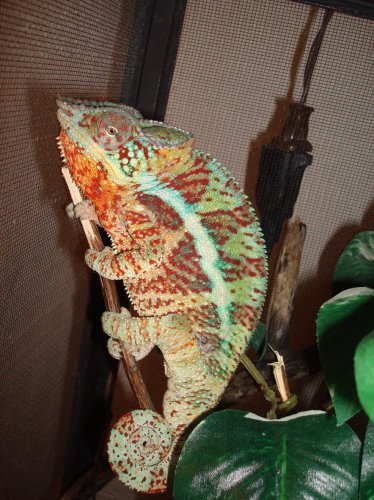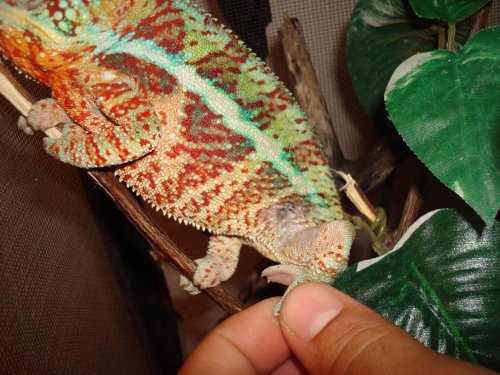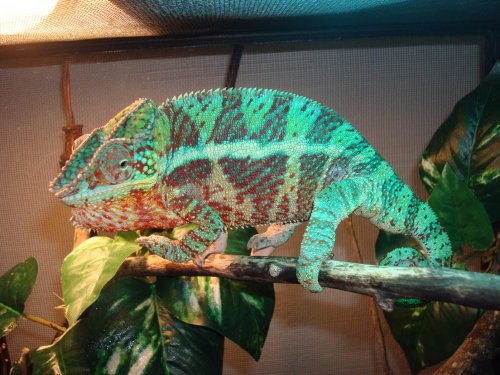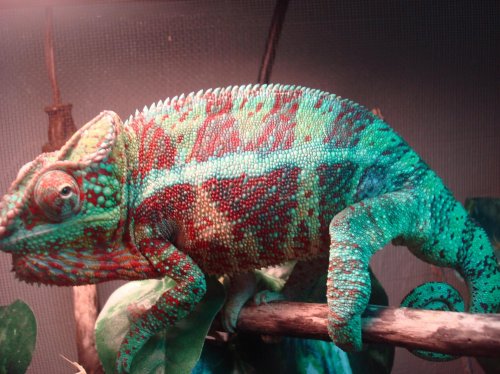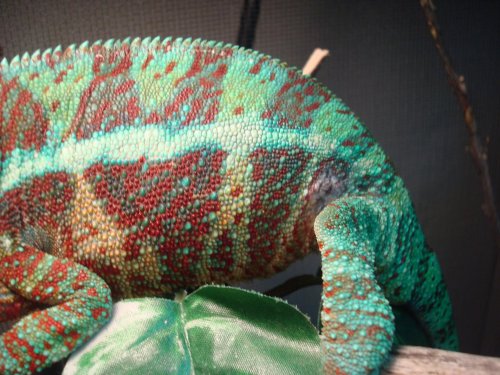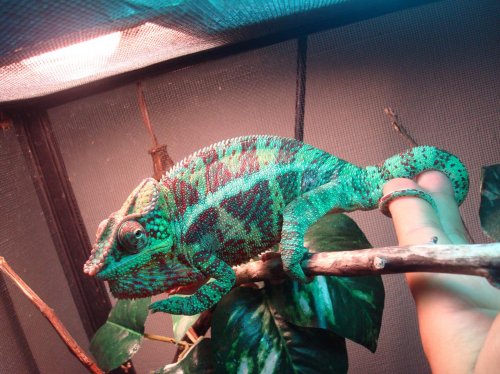my 9month old male panther had a rough shed then i noticed some funny lookin gray-black spotted skin that looked a little like mildew mostly on his thighs and he developed a small sore on his side where his back leg would rest against himself and he hasn't had an apitite but is drinking,3 days ago I started him on sulfatrim antibiotic twice a day, povidone-iodine scrub and soak a few times daily, and silver sulfadiazine cream on his sore after iodine treatment, I also mashed some crikets up with water and some cal and vitm powder and gave him that with a medicine dropper for nuttrients and extra fluids, He seems to be doing ok besides no apitite and the skin patches seem to be drying up and coming off when gently scrubed and his small sore seems to have started healing
Not sure how long to continue treatment if skin looks healed, when should his apetite come back and how long is safe for him not to be eating even if I give him some criket mash
Does what im doing seem correct Please any advise on skin infections
Not sure how long to continue treatment if skin looks healed, when should his apetite come back and how long is safe for him not to be eating even if I give him some criket mash
Does what im doing seem correct Please any advise on skin infections


